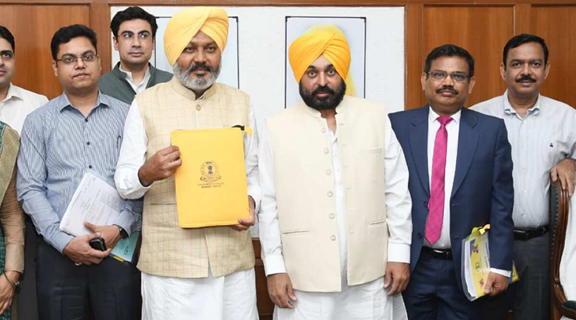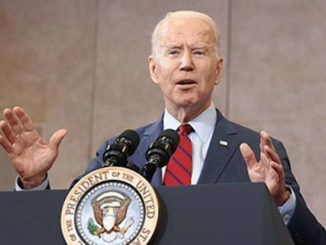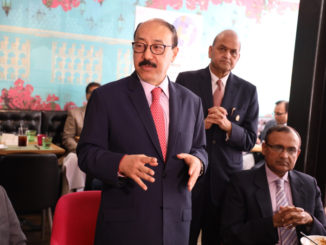

Putting behind the Sangrur Lok Sabha bye-election debacle, three-month-old AAP Government has tried to salvage some of its prestige by presenting the State’s first ever “paperless”. Tax free and please all Budget in Punjab Vidhan Sabha on Monday, June 27. While the ruling party claimed “it is a historic Budget” – drafted in consultation with the people of Punjab, still members of the Treasury Benches were hard pressed to hide their disappointment over rejection by voters of their own citadel a day earlier. Calling it the Janata budget (people’s budget), AAP claimed that it was drafted after receiving 20,384 suggestions on the government portal and through e-mails. Drawing its consolation from Monday, as a new day, marking the start a new week, the Finance Minister Harpal Singh Cheema was upbeat in presenting his maiden budget of Rs 1.55 lakh crore without proposing any new taxes. Interestingly, some of the major initiatives or schemes announced in the Budget are replicas of similar schemes being run in Delhi. These include giving 300 units of free power, “Farishtey” scheme for victims of road mishaps, and “Mohalla” clinics for boosting health care. Even proposed reforms in education and distribution of essential commodities, including “atta”, are modelled on Delhi lines. Cheema said out of five, four “guarantees”—giving 300 units of free electricity, quality education, improving health infrastructure and raising compensation to families of martyred soldiers—have been fulfilled.
Providing 300 units of free power will put an additional burden of Rs 1,800 crore on the state exchequer, said Cheema. The AAP government had announced giving 300 units of free power to every household from July 1.
Only one guarantee of Rs 1,000 to each woman is yet to be fulfilled. Mr Cheema said this would also be done in due course of time. Cheema presented the first paperless budget in the ongoing assembly session and said this step was expected to save Rs 21 lakh per annum. Instead of huge bundles of Budget documents, entire information was made available through an App. Setting up of modern digital classrooms in 500 government schools to bring quality education to villages, upgrading 100 existing schools as “schools of eminence” and posting estate managers for a cluster of schools for the upkeep of their premises are among the proposals. The Government has also drawn a comprehensive scheme for installation of roof top solar panel systems in government schools. To encourage students to plan their careers, a Punjab Young Entrepreneur programme is also being launched. Students of class 11 will be encouraged to propose their business ideas for which the state would provide seed money of Rs 2,000 each.
To further professional education and to discourage students from going abroad for medical education, the Punjab Government has decided to set up 16 new medical colleges over five years, taking the total number of colleges in the state to 25. The first of these medical colleges will come up in Sangrur, the home district of both the Chief Minister and the Finance Minister. The government will also establish 117 “Mohalla Clinics”, for which Rs 77 crore has been earmarked.
To counter its criticism for deterioration in law and order and rapid growth in heinous crime, the Government has resolved to strengthen the police force and equip it the with latest gadgets, technology and tools to tackle crime, maintain law and order with an allocation of Rs 108 crore.
Further, cyber-crime control rooms shall be set up in all districts with an outlay of Rs 30 crore. The Government also intends to bring the entire State under the CCTV network to check the crime and tap criminals.
The stubble burning issue too has been put on priority list. To explore available possibilities and solutions, a sum of Rs 200 crore has been earmarked for the project.
Noting that the agriculture sector is at a crossroad, Cheema stressed on increasing farmers’ income and promoting crop diversification and earmarked Rs 11,560 crore for the agriculture sector. Seeking to put all speculations to rest, Cheema said the AAP government pledges to stand by its farmers and shall continue providing free power for the agriculture sector and allocated Rs 6,947 crore for the same.
Door-to-door delivery of well packaged ‘atta’ in place of wheat to 1.58 crore beneficiaries under National Food Security Act has been promised by the State. It will cost Rs 457 crore. A bailout package of Rs 350 crore for state-owned Punsup has also been mooted. Also among new initiatives is replication of ‘Farishtey’ scheme on the pattern of Delhi whereby the road accident victims will be given free treatment and the helper would be felicitated.
The focus in the first year of its rule, claimed AAP, would be to restore deteriorating fiscal health, deliver on the promises of good governance by ensuring effective use of public funds and concentrate on health and education.
The state’s effective outstanding debt was expected to be Rs 2,84,870.03 crore by end of current fiscal as against Rs 2,63,265.41 crore (revised estimates) for 2021-22.
The state government borrowed Rs 8,000 crore in the last three months besides contributing Rs 1,000 crore to the Consolidated Sinking Fund (CSF) of the state within the first two months.
The revenue deficit and fiscal deficit stood at Rs 12,553 crore and Rs 23,835 crore, respectively.
A total power subsidy, after 300 units concession, has been worked out at Rs 15,845 crore as against Rs 13,443 crore in 2021-22. The Punjab’s AAP government was hoping to generate revenue worth Rs 95,378.28 crore this fiscal, against an expenditure of Rs 1,55,859.78 crore. This would lead to a revenue deficit of Rs 12553.80 crore.
Since no new tax has been announced and the revenue receipts are projected to increase by almost Rs 14,000 crore over 2021-22, the increased revenue would be primarily through excise earnings that would yield an additional revenue of 56 per cent. Buoyancy in GST collection will get the state 27 percent additional revenue compared to last year. The State is also expecting an 11 percent increase in non-tax revenue.The government will fill 24,400 posts in the government sector besides regularizing 36,000 contractual employees. This will cost Rs 450 crore. The Government also reiterated its commitment to implement One MLA one pension scheme. Among various new schemes planned to be launched by the Government this year include Sardar Bhagat Singh Haryali Project under which 50,000 saplings would be planted in each of the 117 assembly segments. While no new taxes have been proposed, revenue receipts are expected to go up by 17.08%.
Another proposal says that 25,000 EWS houses would be constructed. The Budget also makes an allocation of Rs 780 crore for the relining of Rajasthan feeder and Sirhind feeder canal. To meet its financial needs, the state government proposes to raise Rs 31804.99 crore as market loans, up from Rs 27362.74 crore raised by the state last year. The State expects to spend Rs 20,122 crore on payment of interest. However, the total debt servicing will take Rs 36,068.67 crore of the state’s earnings. The State also proposes to set up a Traders commission and Fintech city to come up for IT companies in Mohali. The budgetary allocation for social security pensions is proposed to be increased from ₹4,071 crore during 2021-22 (BE) with coverage of 28.12 lakh beneficiaries to ₹4,720 crore in FY 2022-23 with a target of covering 31.23 lakh beneficiaries.
Rs 3,003 crore is being proposed for development of rural areas in the state. To promote direct seeding of rice, the State is keeping apart Rs 450 crore as financial assistance to beneficiary farmers.
A new Quick Freezing Centre is proposed to be established at Verka, Amritsar, at a cost of Rs 7 crore. Further, an Integrated Hi-tech Vegetable Production-cum-Technology Dissemination Centre at Malsian, Jalandhar, will come up at a cost of Rs 11 crore. For the cooperatives sector, Rs 1,170 crore allocated, which is an increase of 35.67% compared to the last financial year. Punjabi University, Patiala, will get Rs 200 crores as a special grant. An amount of Rs 30 crore has been earmarked for providing infrastructure facilities in libraries of government colleges of 9 districts – Tarn Taran, Barnala, Ludhiana, Fazilka, Malerkotla, Moga, Pathankot, Muktsar Sahib and Shaheed Bhagat Singh Nagar. The State would start a CM scholarship with an allocation of Rs 30 crores to general category students for giving them concessions in university. Students of poor families, especially of general category studying in government colleges, will get concession in the fee, based on the marks obtained by the student. But do these schemes of a government meet the hopes and aspirations of the people of Punjab who chose their new rulers just three months ago? Some of the new schemes look cosmetic with allocations that can best be described as “symbolic”. Allocations like Rs 35 crore or Rs 50 crore to deal with issues like career development of jobs-starved State may have good intent but not the all-out support.
(Prabhjot Singh is a veteran journalist with over three decades of experience covering a wide spectrum of subjects and stories. He has covered Punjab and Sikh affairs for more than three decades besides covering seven Olympics and several major sporting events and hosting TV shows. For more in-depth analysis please visit probingeye.com or follow him on Twitter.com/probingeye.He can be reached at prabhjot416@gmail.com)





Be the first to comment